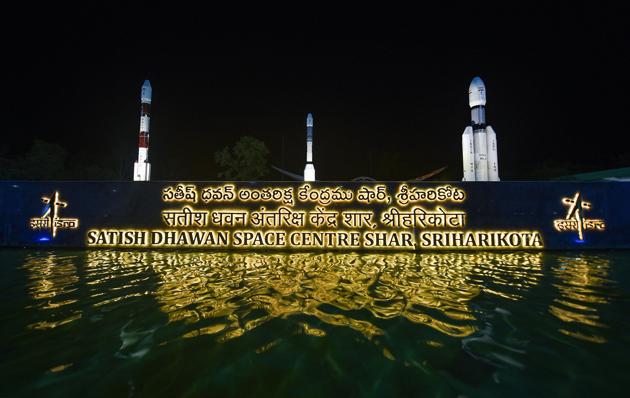Chandrayaan 2: ‘Snag noticed in nick of time’
Chandrayaan 2 was set for launch atop a GSLV Mark III — India’s most powerful rocket — from the Satish Dhawan Space Centre at Sriharikota off the Andhra Pradesh coast, but countdown was halted 56 minutes and 24 seconds before the planned liftoff.
The last-minute snag that forced India to defer its second lunar moon mission, Chandrayaan 2, on Monday was unlikely to be a major systems problem and the Indian Space Research Organisation (Isro) was lucky that the Rs 978 crore spacecraft did not enter the automatic launch sequence, a senior official at the space agency said on condition of anonymity.

The spacecraft looked set for launch atop a Geosynchronous Launch Vehicle (GSLV) Mark III -- India’s most powerful rocket -- from the Satish Dhawan Space Centre at Sriharikota off the Andhra Pradesh coast, but countdown was halted 56 minutes and 24 seconds before the planned liftoff at 2:51 am. “A technical snag was observed in launch vehicle system at one hour before the launch,” Isro tweeted.
The official said that various expert committees at Isro were investigating the matter to fix the problem, and that the inbuilt mechanism in the rocket to detect glitches had worked well.
“It looks like a small issue, there is no major system problem so at the moment we don’t think disassembly is required. It could be a propulsion or avionics-related issue,” the official said, asking to not be named because he is not permitted to speak to media. “We managed to save Rs 1,000 cr mission in time,” he added.
Avionics refers to the complex system of electronics used in the rocket and comprises communications, navigation, display and management systems. Propulsion is the system that helps a rocket take off. In the GSLV Mark III, the propulsion has three stages powered by solid, liquid and cryogenic (frozen to very low temperatures) fuel, respectively.
“We were lucky that the mission did not enter the automatic launch sequence else all would have been lost. All things are in our control; the launch was called off because the expert committee decided to put it off,” the official added. After the problems are fixed, the mission will be undertaken in favourable conditions and scientists need a 13-14 hour countdown notice to implement the new launch.
“There has a to be earth-moon symmetry to launch the mission and its available till the end of the month…we cannot launch with even 1% doubt,” the official said. If the Chandrayaan-2 mission is successful, it will propel India into rarefied company: Russia, the United States and China are the only countries to have landed a craft on the lunar surface. Chandrayaan-2, whose name refers to a moon vehicle in Sanskrit, will follow China’s Chang’e-4, which in January became the first spacecraft to successfully land on the far side of the Moon.
The Indian mission will involve a 2.4-tonne orbiter that will circle the Moon for about a year, imaging and studying the surface -- including a search for water -- and will also examine the lunar atmosphere.
A 1.4-tonne lander Vikram — named after Vikram A. Sarabhai, the father of the space programme — will head to the lunar south pole. It will carry with it a solar-powered rover named Pragyan — “wisdom” in Sanskrit —will roam as far as 500 metres away from the lander to study the composition of the Moon’s surface for one lunar day —the equivalent of 14 Earth days. India’s first lunar mission -- Chandrayaan-1 in 2008 — did not land on the Moon, but orbited the Moon searching for water using radar.






